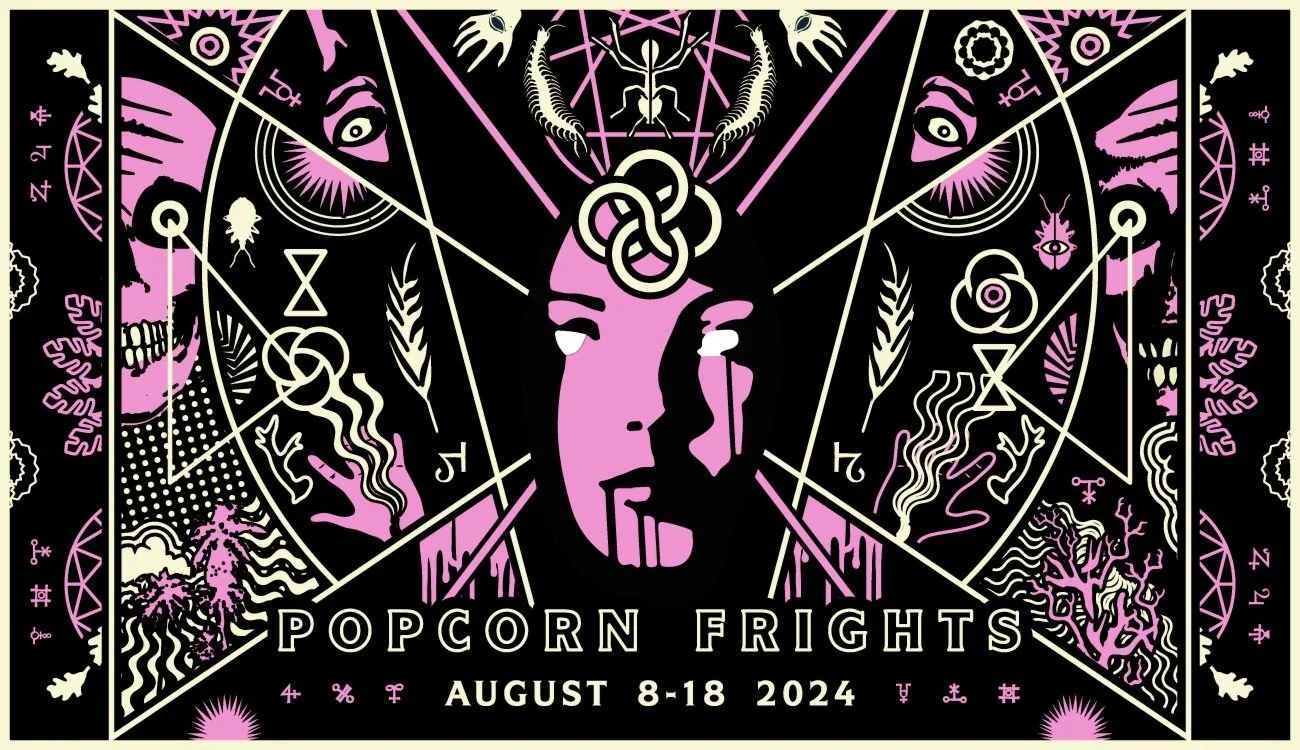POPCORN FRIGHTS FEST offers thrills and chills in week one
The Activated Man
Written & Directed by Nicholas Gyeney
Special Presentation August 16, tickets here
The Activated Man follows Ors Gabriel (Jamie Costa) as he grapples with the intense loss of his beloved dog to cancer. This trauma triggers strange vision projections, forcing Ors to question his own reality. With the help of spiritual counselor Jeffrey Bowman (Tony Todd), Ors battles the force of the Fedora Man who’s feeding off of his grief. He isn’t the only horror alum, either. Kane Hodder plays the role of Ors’ absent father and his stunt skills are put to work!
Tony Todd's performance stands out in a role that seems tailor-made for him. Perhaps it was? If you’re familiar with Black horror and it’s history, the term “magical negro” isn’t anything new for you. It’s one of the first tropes that Black entertainers succumbed to in the early days of Hollywood. They’re used as a plot device to help the white protagonist overcome their conflict, and they usually lack character depth. Jeffrey is a subversion of that, though.
Its’ exploration of grief, especially from the perspective of a pet owner, increases the emotional investment and pushes the boundaries of the genre. The narrative captivates with a strong opening, featuring an incomprehensible fever dream sequence that immerses the viewer in Ors' mental turmoil. There’s a magical realism that adds an unexpected but delightful layer to the story with compelling depictions of spiritual energy. Though the scoring sometimes drowns out the dialogue, the creativity with visual effects really made this movie shine for me.
Video Vision
Written & Directed by Michael Turney
Florida premiere held August 11, now available on demand here
Video Vision centers on Kibby (Andrea Figliomeni), an employee at a digitizing facility, who encounters a mysterious old VCR that starts to affect her in strange and supernatural ways. As Kibby begins to transform into a creature reminiscent of something from the depths of analog film, she finds herself entangled in a romance with Gator (Chrystal Peterson), a trans man. This dual narrative draws parallels between Kibby's physical and mental transformation and Gator's transition.
The film intended to be the first part of a trilogy, utilizing creative and nostalgic analog visuals reminiscent of Shudder’s V/H/S franchise. While the film has its strengths in visual storytelling and concept, it struggles with coherence and depth in its narrative execution.
The film's visual depiction of Kibby's internal battle with her transformation starts off strong, offering engaging and vivid imagery. However, as the story progresses, these visualizations become muddled and less coherent. Dr. Analog, the dark force behind the VCR, is introduced through Kibby's limited findings—just one article from the 90s—making his character feel underdeveloped. Despite this, the minimal backstory supports the empathy that the audience should feel towards Kibby.
The film aims to provide representation of the trans experience, but it feels half-baked. Kibby's journey of understanding Gator's identity and her own attraction lacks a solid foundation, and as Dr. Analog's influence grows, her character becomes increasingly lost in ambiguity. A notable line from Gator—"I've accepted that I'm male, maybe you should accept the fact that you're turning into an obsolete entertainment device, all I know is that you're making my dysmorphia feel normal"—illustrates the film's attempt at intertwining their experiences, though it doesn't fully succeed.
Old Wounds
Written by Chelsey Grant, Steven Hugh Nelson and Brian Villalobos
Directed by Steven Hugh Nelson
World premiere held August 11, tickets available here
This is a gripping found footage film that follows Steve (Steven Hugh Nelson) aspiring filmmaker and his girlfriend (Chelsey Grant) on a road trip to meet her family. The cinematography bounces between iPhone footage and camcorder footage: creating a unique homage to the evolution of the found footage sub-genre. There’s a cleanliness to the iPhone footage that is reminiscent of YouTube vlogs. On the other hand, the grainy visuals and night vision on the camcorder are utilized for distortion. They both work very well together to create an off-putting energy.
As the filmmaker delves deeper into his girlfriend's past, they uncover that he’s not the only one documenting their journey. The plot is filled with unpredictable twists and turns, keeping the audience on the edge of their seats. The cohesion of the narrative and technical film elements help to thematically explore voyeurism and the vulnerability of someone prying into your life: consensually and non-consensually.
Small breadcrumbs are sprinkled throughout the narrative to direct viewers' suspicions, culminating in a sudden tonal shift as they reach her hometown. The sound design is meticulously crafted to build a sense of unease and maintain a constant feeling of discomfort. I would like to think that this is how audiences might have felt watching The Blair Witch Project for the first time. It offers such a fresh yet nostalgic take on the found footage genre.





